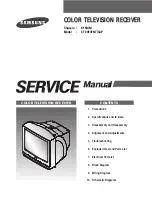
1-1
1 INSTALLING AND CONNECTING THE TRANSCEIVER
PRECAUTIONS FOR INSTALLATION
To carry and install the transceiver requires two or more
persons. Due to the size and weight of the equipment,
installing the transceiver by yourself may cause you
personal injury and/or damage the transceiver.
Do not grasp the transceiver by the Tuning control, the
knobs or connectors on the front and rear panels. Doing
so may cause you personal injury and/or damage the
transceiver knobs and connectors.
ANTENNA INSTALLATION AND CONNECTION
An antenna system consists of an antenna, a coaxial
cable and a ground. With careful installation, a good
antenna system can result in optimal performance for the
transceiver.
Ensure that you are using a correctly tuned 50Ω antenna
and that the coaxial cable and appropriate connectors
also have an impedance of 50Ω. All connections must be
clean and tight.
After making the connection, match the impedance of the
coaxial cable and antenna until the SWR becomes 1.5:1
or less.
A high SWR results in a drop in the transmit power as well
as radio frequency interference to consumer products
such as broadcast radio and television.
If you are notified that the signal has been distorted,
the antenna system may not be efficiently radiating the
transceiver's power.
PRECAUTIONS
◆
Transmission without connecting an antenna to the transceiver may
damage the transceiver. Prior to transmitting, connect an antenna
or a 50Ω dummy load to the transceiver.
◆
When using the transceiver as a base station, we recommend you
install an arrester so as to avoid fire, electric shock, damage and
injury.
◆
If the antenna SWR exceeds 1.5:1 or more, the protection circuit
activates in the transceiver. Ensure that the antenna SWR is 1.5:1
or lower.
◆
If the antenna dedicated for reception uses a semiconductor,
such as an active antenna, do not transmit with it nor activate the
antenna tuner. Doing so will supply power to the antenna system,
damaging the semiconductor circuits of the antenna.
CONNECTING AN AC POWER CABLE
Use the supplied AC power cable to plug to an AC
outlet with a protective grounding contact. Ensure that
the grounding lead from the AC plug has been properly
connected to the ground terminal before plugging the
AC plug into the outlet. Likewise, remove the ground
connection only after unplugging the AC plug. Failure to
do so may result in an electrical shock.
PRECAUTIONS
◆
The AC power cable supplied with the K-type transceiver can only
be used for the supply voltage from AC 90 V to AC 132 V. Do not
use or modify the supplied AC power cable with the UL plug for the
supply voltage from AC 180 V to AC 264 V.
◆
The AC power cable with the CE plug and the AC power cable with
the BS plug are supplied with the E-type transceiver. Use one of
the supplied cables that can correctly be plugged to an AC outlet.
GROUND CONNECTION
To avoid dangers such as electric shock, a good ground
connection is necessary.
Bury one or more grounding rods or a large copper plate
in the ground and connect it to the GND terminal on the
rear panel of the transceiver using a thick conductive wire
or a well fitted copper band plate.
PRECAUTION
◆
Do not use a gas pipe, an electrical conduit pipe, a plastic water
pipe, etc., for grounding. These items will not create a proper
ground and may cause an accident or fire.
LIGHTNING ARRESTER INSTALLATION
To avoid fire, electrification, damage, and injury by the
lightning strike, install the lightning surge protector.
If a lightning storm is in the area, disconnect the antenna
cable from the transceiver.
TRANSCEIVER TILT MECHANISM
The lift-up supplementary bases are on the front bases on
the bottom of the transceiver. To position the front panel
slightly toward the upper side, pull the supplementary
bases forward to the limit.
To use the front bases, be careful not to catch your fingers
when lifting up the front bases’ mechanism.
Rear Panel
GND terminal
RX IN
ANT 1
HF/50MHz
(M-type)
ANT 2
HF/50MHz
(M-type)
ANT 3
HF/50MHz
(M-type)
ANT 4
HF/50MHz
(M-type)
AC Power Cable (Supplied)
Summary of Contents for TS-990S
Page 1: ... B62 2389 10 09 08 07 06 05 04 03 02 01 HF 50 MHz TRANSCEIVER TS 990S INSTRUCTION MANUAL 1 01 ...
Page 2: ......
Page 42: ......
Page 54: ......
Page 78: ......
Page 154: ......
Page 164: ......
Page 168: ......
Page 192: ......
Page 224: ......
Page 232: ......
Page 270: ......
Page 284: ......
Page 290: ......
















































